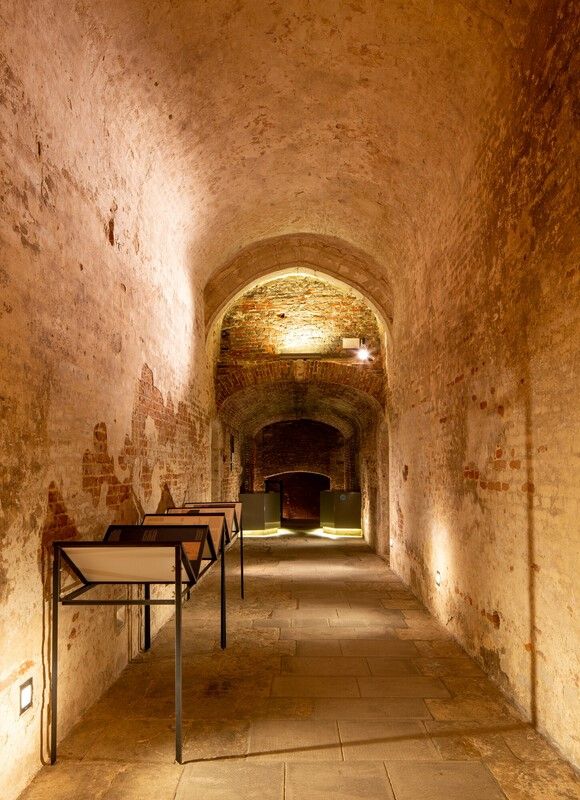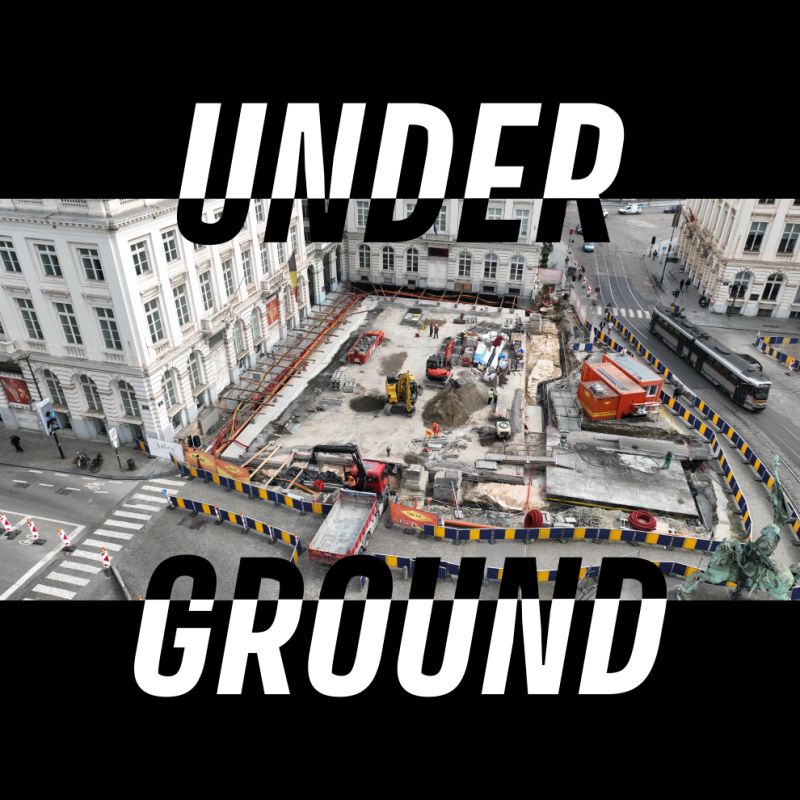A journey through time that reveals the hidden history of the Coudenberg Palace
From Tuesday October 22nd, 2024, until Sunday March 2nd, 2025, the Coudenberg Palace, with the support of Urban, presents: “UNDER-GROUND”, an exploration of the underground remains of this historic building.
The tour reveals the hidden history of the palace, as well as the urban legends about it, through about thirty sound bites, accessible via a web application, with texts written by Brussels writer and historian Marc Meganck, who works at Urban’s Archaeological Heritage Department.
This way, “UNDER-GROUND” takes visitors on a journey through time, where they discover the mysterious corridors and secret passageways that have fed the myth of an underground city. The tour draws on modern reconstruction techniques and urban archaeology discoveries. It is enhanced by old photographs, historical accounts, interviews with key players, including several of Urban’s historians and archaeologists, as well as a 3D reconstruction of the palace.
Practical information
- From Tuesday October 22nd 2024 until Sunday March 2nd 2025.
- The tour is included in the admission price.
- Visitors are asked to bring their own headphones for a more enjoyable experience.
- Free WI-FI available on site.
Some background
During the night of 3 to 4 February 1731, the Coudenberg burnt down in a fire, and was then left in ruins for 40 years and hidden beneath the new royal district. The remains, from then on underground, would live on in people’s memories and give rise to many urban legends. Mysterious corridors? Secret passages? Testimonies feed the myth of a hidden city, until archaeologists reveal these traces of the past.
At the beginning of the 20th century, while Art Nouveau and Art Deco was thriving in Brussels, the major town-planning upheavals in the city generated a kind of nostalgia and renewed interest in the past and the architecture of the Middle Ages and the Renaissance, which led to the creation of a “Comité d’études du Vieux-Bruxelles” (Old Brussels Study Committee). Under the impetus of Belgian historian and archivist Alphonse Wauters, archive documents were studied, leading to the first reconstructions of buildings that had disappeared. This exploration of the past reveals previously hidden corridors and cellars that are the remains of the Coudenberg Palace.
With the rise of urban archaeology in the 1980s, large-scale excavations were undertaken, revealing the extent of the remains of this former palace and enabling Brussels residents to rediscover their city and the international scope of its history.

